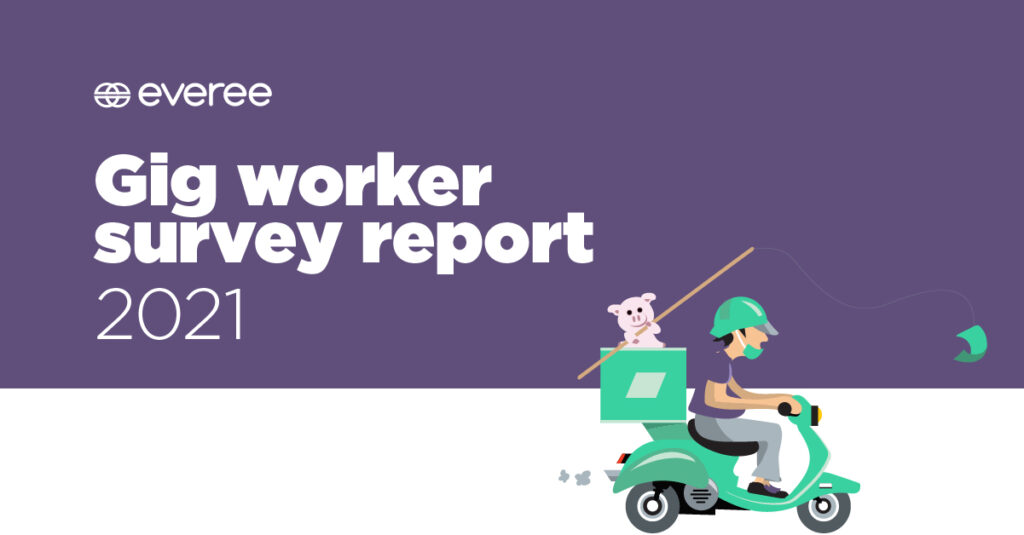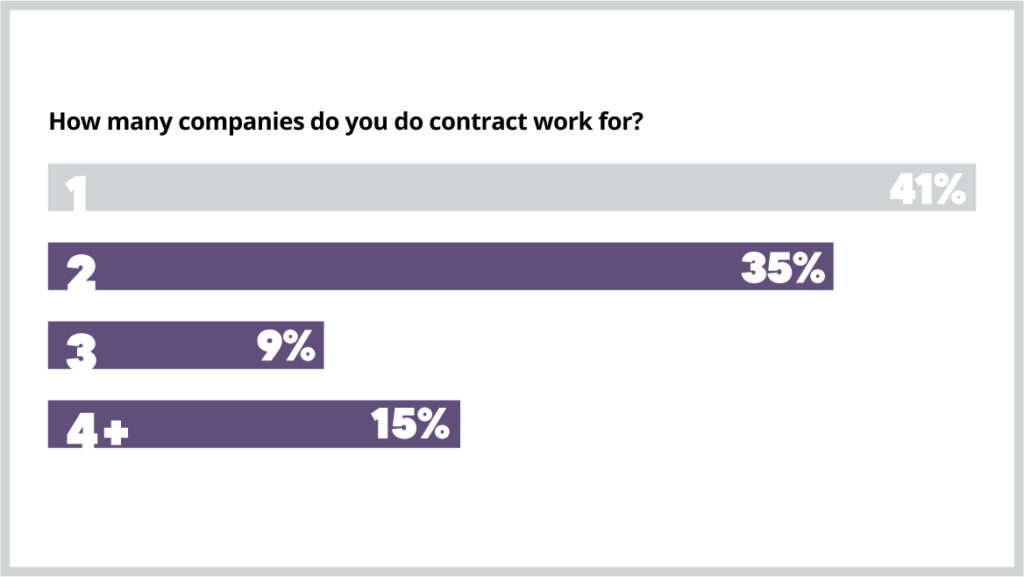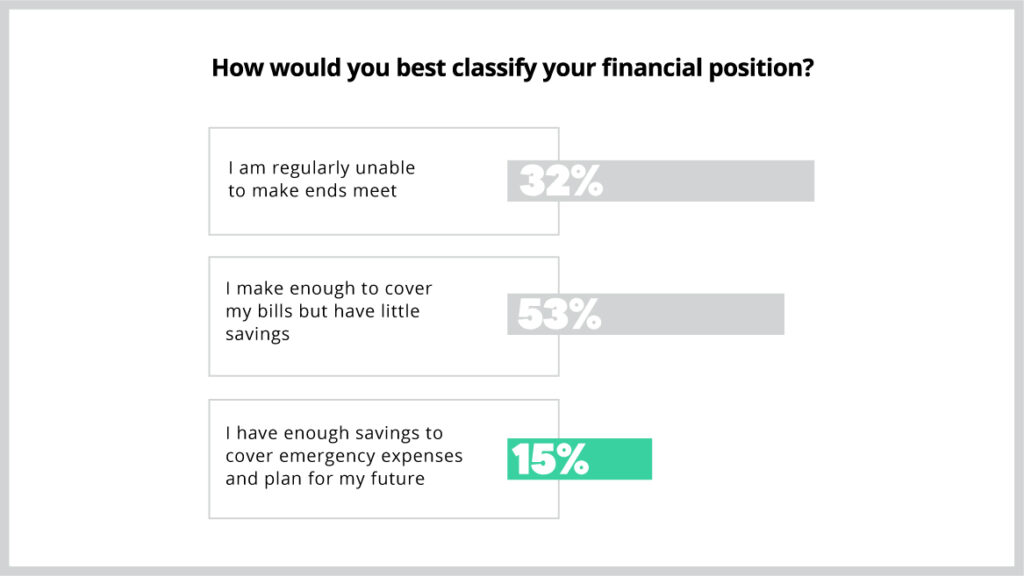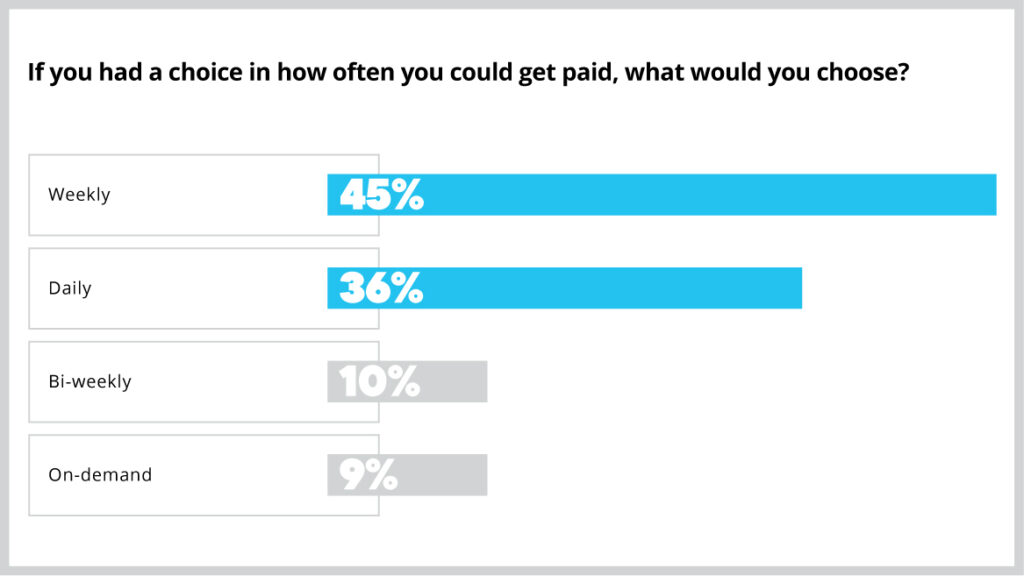
Today we’re sharing Everee’s first annual Gig Worker Survey Report. In this report, we surveyed over 400 gig workers in the United States to better understand the needs of the newest essential workforce.
We found that gig workers need ways to improve financial health. The majority of those surveyed say they’re in the same or worse financial situation than 12 months ago. While the data underscores gig workers’ preference for flexibility in selecting an employer and a schedule, it also reveals these workers want options when it comes to how and when they’re paid.
Catering to pay preferences and other needs of gig workers could certainly make potential employers more attractive to this growing workforce. The following 3 statistics illustrate that gig companies and those looking to scale up their contingent workers will need to do more to stand out as this sector grows.

1. Gig workers don’t play favorites; 59% of gig workers work for more than one company.

The survey results show that gig workers often contract with multiple companies. Independent contractors with hard-to-find skillsets or geographic areas with low unemployment may be particularly in demand.
As a result, competition for reliable and capable workers may be higher than expected, especially if gig workers are making themselves more available for lucrative clients and projects.
Companies should consider what motivates independent workers to choose one company over another.
2. Many are on thin financial ice with only 15% having enough money to cover an emergency expense.

Not surprisingly, given the impact of the global COVID-19 pandemic, our survey found that gig workers are under more financial strain than they were this time last year. And very few of them say they have the money to cover emergency expenses.
Not being able to financially weather an emergency expense can hurt a worker’s ability to consistently show up for shifts or perform work (e.g. a driver experiencing car trouble cannot complete their duties.)
While the data shows that workers turn to friends, family and payday loans as a lifeboat, the mental burden remains. And ongoing financial instability can lead to increased stress, which is harmful to workers’ health and engagement at work.
3. Flexible workers want flexible pay: 91% want a pay frequency other than the traditional bi-weekly cycle.

Flexibility is a key driver in the decision to participate in the gig workforce. Workers like the flexibility to choose their own hours, pay cycles, time off, projects and working locations.
Our survey found the vast majority of gig workers are unhappy with the traditional pay cycle and want a different pay frequency. The ability to pay workers faster is one way a company can become more attractive to regular employees, too. Especially if it’s a benefit that workers can access when they need it.
Get the full report: 2021 Gig Worker Survey Report

Join our live event for more analysis
Want a deep dive on the full report? Gig economy expert and founder of The Rideshare Guy, Harry Campbell, is performing a full analysis of the results during our live webinar event on Thursday, February 25th at 11:30 am MT. Register now and ready your questions for Harry as you learn new strategies for attracting and retaining independent contractors in 2021.
